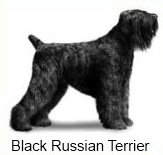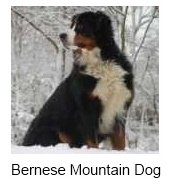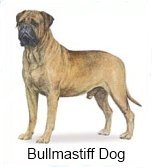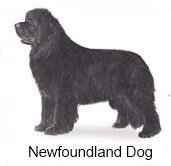Akita Dog Breed
The Akita Dog Breed, also known as the Japanese Akita, is renowned for its intense loyalty and love. It originated in the northern area of Japan in the seventeenth century. Ownership at that time was restricted to the aristocracy.
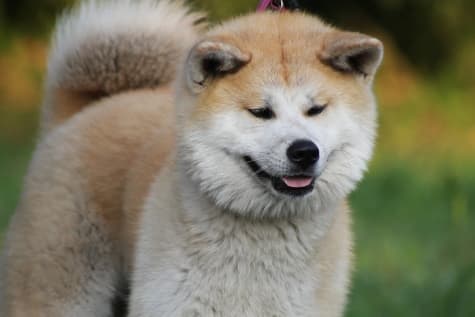
Initially, the breed was developed as a powerful hunting dog, but it also came to be revered in the home as a guardian and companion. In Japan, the Akita is symbolically associated with good health, longevity and happiness. Today it is classified with the working dog breeds.
This breed was one of the first, among seven breeds, to be declared a national monument in Japan and as such, a protected canine.
The Akita is a handsome and impressive-looking dog with a solid, powerful and well-balanced frame. The dark eyes and naturally erect ears are comparatively small in a head that overall has larger characteristics.
Akitas became popular in America after World War II, when many of them were brought here by servicemen who had come to know and admire them during the occupation.
Hachiko - A Famous Akita
The Akita dog breed will be no stranger to you if you have enjoyed, as well as cried through, the movie Hachi: A Dog's Tale, which was based on a true story involving an Akita named Hachiko.
As a result of this story about Hachiko's incredible loyalty to his master, a statue and wall sculpture was erected at the Shibuya Station in Tokoya, honoring him - the train station being a focal location in the story. (See the movie for the whole story!)
Personality and Traits of the Akita Dog Breed
While this breed was originally developed for hunting purposes, it has a fine reputation, as well as many attributes to recommend it as a family companion.
The Akita is especially known for its exceptional loyalty, affection and for forming strong bonds with his human family. In the home it can be quite docile, but due to its independent nature, it does best in a setting where it is treated fairly and where there is strong, yet respectful, leadership. Its fearless nature and natural protective instincts also make it a reliable guard dog.
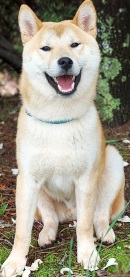
Training is best accomplished using positive reinforcement techniques - never harshness. Socialization and training should be on-going events to help Akitas understand the difference between friendly and threatening situations.
The Akita dog breed is essentially a peaceful and quiet breed, not given to nuisance barking. They also love to be included in the day-to-day family events, have a good sense of humor and definitely don't want to be sent outside and/or left alone all day.
While not unfriendly to visitors, they don't crave outside attention, preferring to take a more neutral stance.
Health Profile of the Breed
Health issues associated with the Akita dog breed that may affect them during their life time include:
- Degenerative myelopathy
- Autoimmune disorders
- Hip and elbow dysplasia
- Hypothyroidism
- Progressive retinal atrophy
It should be noted that the Akita is very sensitive to onions which even in small quantities can cause Heinz Body Anemia, a serious disorder causing damage to red blood cells.
(This is also true for another Japanese dog breed - the Shiba Inu.)
How Much Activity Does the Akita Need?
Akitas need to be exercised on a regular schedule. A twice daily
significant walk plus the opportunity to run in a secure area is the
ideal.
If you are a family that likes to go on hikes, this dog has good endurance and will have no trouble keeping up with you.
Alternatively, pet treadmills like the one shown below, can be used to
provide exercise when owners can't get out, during bad weather, or as
supplemental exercise.

Exercise Treadmill For Dogs
Appearance And Grooming
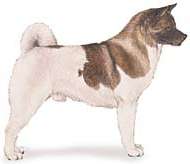
Height: 24-28 inches Weight: 70-130 lbs.
Color Variations: According the AKC standard, the coat of the Akita dog breed can be any color including white; brindle; or pinto.
Colors are rich, brilliant and clear. Markings are well balanced, with
or without mask or blaze. White Akitas have no mask. Pinto has a white
background with large, evenly placed patches covering head and more than
one-third of body. Undercoat may be a different color from outer coat.
The Akita dog breed has a thick double coat well suited to hunting in his native habitat. The under coat being soft while the outer coat is harsh and straight with an off-standing appearance.
Around the head and legs, the hair is shorter compared to the withers and rump. The attractive tail, which curls over the back, has the longest and most dense amount of hair.
While Akitas are quite fastidious and pretty much self-groom, daily brushing will result in shedding becoming almost a non-event.
The exception to this is a twice yearly heavy shedding of their coat during which time owners should remove the dead hair more frequently. A very exceptional tool for this job is the FURminator DeShedding Tool.
Ideal Living Space?
When the Akita is outside, he should be in a fenced area because of his strong prey drive. It is also ideal if the setting allows him room to run about.
That being said, because this dog is very family oriented, he should not be relegated to spending long periods of time outdoors.
Children and the Akita?
The Akita Dog Breed is a large and powerful dog.
Although it is very affectionate and loyal to its family, it is probably not the ideal dog to be around small children.
Seniors or Less Active Families?
This breed has been used successfully in therapy situations.
That being said, as an everyday companion to seniors or those with less dog experience, it is not recommended due to its strong drive to be in the alpha position.

Books To Read




